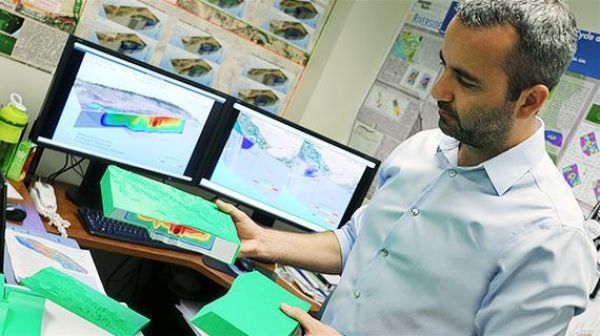Some of the world's most powerful earthquakes involve multiple faults, and scientists are using supercomputers to better predict their behavior. Multi-fault earthquakes can span fault systems of tens to hundreds of kilometers, with ruptures propagating from one segment to the other. During the last decade, scientists have observed several cases of this complicated type of earthquake. Major examples include the magnitude (abbreviated M) 7.2 2010 Darfield earthquake in New Zealand; the M7.2 El Mayor – Cucapah earthquake in Mexico immediately south of the US-Mexico border; the 2012 magnitude 8.6 Indian Ocean Earthquake; and perhaps the most complex of all, the M7.8 2015 Kaikoura earthquake in New Zealand.
"The main findings of our work concern the dynamic interactions of a postulated network of faults in the Brawley seismic zone in Southern California," said Christodoulos Kyriakopoulos, a Research Geophysicist at the University of California, Riverside. He's the lead author of a study published in April of 2019 in the Journal of Geophysical Research, Solid Earth, published by the American Geophysical Union. "We used physics-based dynamic rupture models that allow us to simulate complex earthquake ruptures using supercomputers. We were able to run dozens of numerical simulations, and documented a large number of interactions that we analyzed using advanced visualization software," Kyriakopoulos said.
A dynamic rupture model is a model that allows scientists to study the fundamental physical processes that take place during an earthquake. With this type of model, supercomputers can simulate the interactions between different earthquake faults. For example, the models allow study of how seismic waves travel from one fault to and influence the stability of another fault. In general, Kyriakopoulos said that these types of models are very useful to investigate big earthquakes of the past, and perhaps more importantly, possible earthquake scenarios of the future.
Read more at University of Texas at Austin, Texas Advanced Computing Center
Image: Christodoulos Kyriakopoulos, University of California, Riverside. (Credit: UC Riverside)


